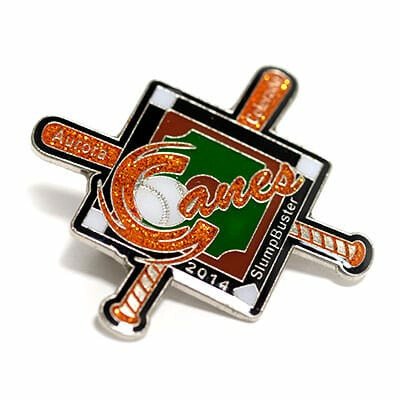
Get to Know Custom Trading Pins
One of our original promotional products, and still a favorite today
Rick Cundiff
Custom trading pins are one of our most popular products at TJM Promos. It’s one of the products we got our start with nearly 20 years ago. Let’s take a look at where they came from, and what makes them so popular.
From the Olympics to the World
Trading pins as we know them today owe their origin to the modern Olympic games. Athletes who came together in Athens in 1896 wore simple cardboard discs to identify athletes, judges and officials. Each group wore a unique color.
At 1924’s Paris summer games, the discs had evolved into ornamental pins. In the new Olympic village quarters, both officials and athletes began trading them as souvenirs and symbols of international goodwill. Over the next few decades, the tradition of swapping pins expanded to include spectators as well.
Interest in trading pins soared in 1988, the year Coca-Cola featured its own pin trading center at the Calgary Winter Olympics. Between that and youth league baseball, trading pins truly came into their own.
Little League Baseball® introduced the first official team trading pins in 1983. They’ve become a staple of youth sports ever since. At the Little League World Series in Williamsport, Pennsylvania, pin trading is nearly as popular a pastime as the games themselves. Pins trade there by the thousands every year.
Then there’s Disney. The entertainment giant features trading pins at all of its theme parks worldwide, offering both common and limited edition pins for collectors. The Disney imprint popularized the pin trading tradition even more.
Design Focus
Creating custom trading pins starts with a team design. These often include standard emblems of the sport, such as baseball bats, hockey sticks or basketballs.
The pins are most often created in the soft enamel style. The design is struck from a metal base, then plated. Next, the pin is painted with enamel colors and heat-cured. The final step is to apply a clear epoxy layer to protect the finish and add gloss and depth.
Add-ons such as glitter, spinners and sliders add visual appeal and even motion to the pins, boosting their trade value even more.
Why Are Trading Pins Popular?
Several factors help make trading pins popular. For starters, they’re small enough to be easily portable. You can take them with you, wearing them on clothing, hats, backpacks. Larger collections can fit into a carrying case that protects them from scratches and scuffs.
Trading pins also have the advantage of being a low-cost collectible. They’re inexpensive enough for almost everyone to start a collection easily. And trading among fellow collectors is fun.
Finally, trading pins are attractive. They can be miniature works of art, showcasing a team logo or symbol. They add color and flair to anything they’re attached to.
With so many great attributes, it’s no wonder trading pins have become a global phenomenon. They truly are a universal symbol of friendship.
Rick Cundiff
Content Director, Blogger
Rick Cundiff spent 15 years as a newspaper journalist before joining TJM Promos. He has been researching and writing about promotional products for more than 10 years. He believes in the Oxford comma, eradicating the word "utilize," and Santa Claus.
